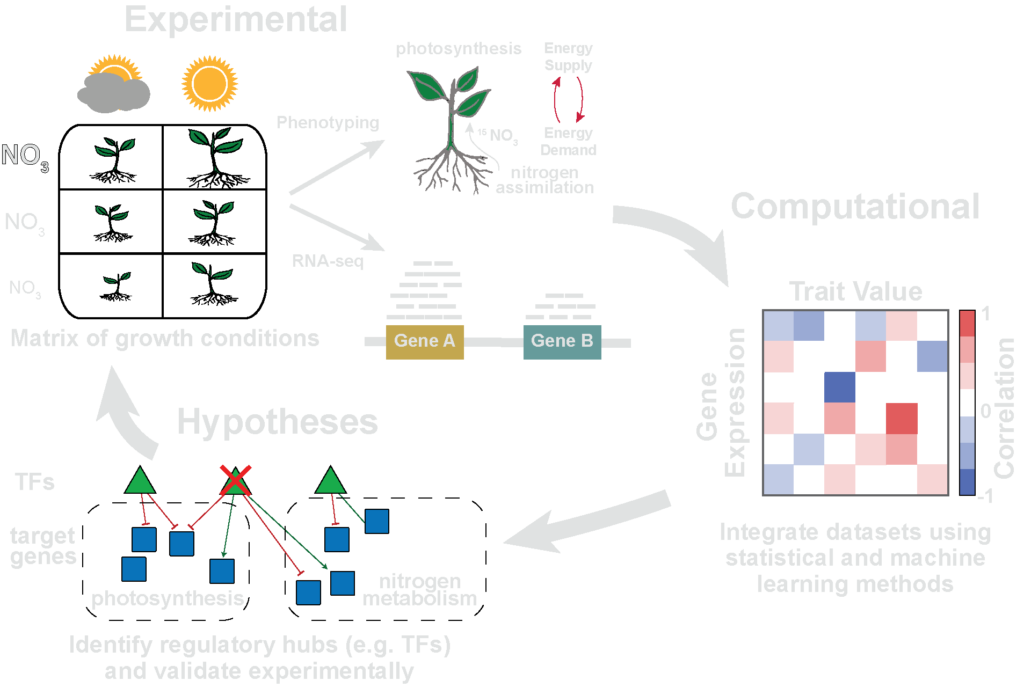Optimizing photosynthesis and nitrogen use efficiency for a changing climate
The aim of research in the lab is to use a systems biology approach that combines genomics, phenotyping, and computational biology to understand how photosynthesis and nitrogen use are coordinated in plants.
The three main objectives driving this work are to:
-
- Define the molecular factors involved in coordinating photosynthesis with nitrogen availability under diverse environmental conditions.
- Identify natural genetic variation influencing crosstalk between photosynthesis and nitrogen use in plants with different metabolic pathways and growth strategies.
- Bridge basic and applied research by transferring knowledge from data-rich model species to crops

Improving our understanding of how genetic and environmental factors influence the coordination of photosynthesis and nitrogen assimilation will help identify strategies for improving crop production and reduce our dependence on nitrogen fertilizers. This is an important goal because fertilizer production is a significant source of greenhouse gas emissions, and climate change will in turn impact photosynthesis and crop yield. At a fundamental level, this work will also contribute to understanding the basic principles underlying how cellular networks process complex environmental signals.
